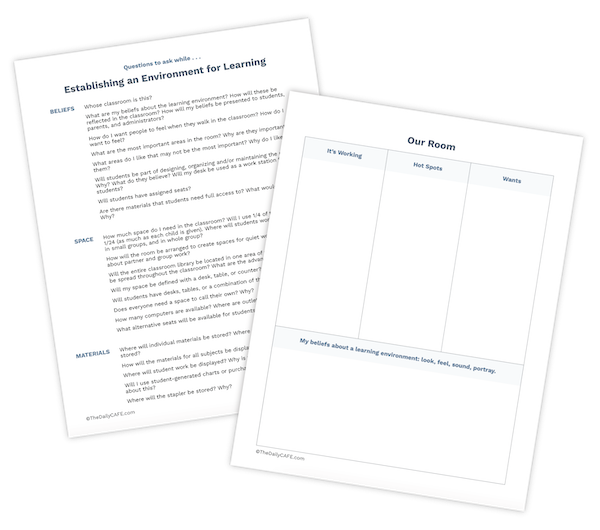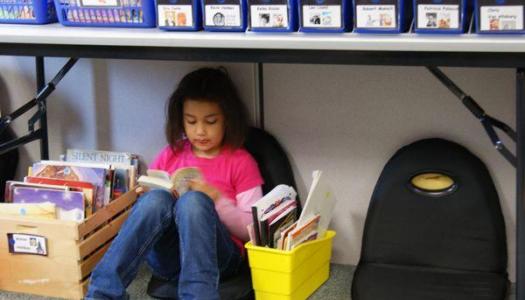Reflecting on Our Classroom Environments
Join Our Community
Access this resource now. Get up to three resources every month for free.
Choose from thousands of articles, lessons, guides, videos, and printables.
Thinking back on our first years of teaching, we realize that the environment we created looked very different from how it does now. The space reflected the sense that we, the teachers, needed to have complete control over the classroom, curriculum, and children’s behavior. It was set up for quiet since our teaching was evaluated on the amount of noise produced in our rooms: little noise meant great teacher; lots of noise meant the teacher had poor classroom-management skills. Our student desks were in rows, and our teacher’s desk loomed in front, facing the students.
As our beliefs about student learning and teaching changed, our room arrangement did, too. Adding opportunities for conversation and group work led us to shift from desks in rows to small-group arrangements so students could work together.
Our thoughts about classroom design really came into focus when we spent time with Margaret Mooney, a literacy leader in New Zealand. She asked, “Does your classroom environment reflect your beliefs about teaching and learning?” We went back to our rooms, took a hard look at the environments, and considered the message being sent to children and adults when they walked in. We sadly realized that no, our room environments did not really reflect what we believed and wanted for our students.
We believed children deserved to have choices at a variety of levels, yet there were no choices regarding where to sit. Children were still assigned seats and required to sit at a desk or table (even though we knew that many of our tables and desks were ill-fitting and some children struggled to sit in a chair for even a few minutes).
We thought we trusted and respected students, yet our rooms didn’t reflect those beliefs. We noticed that the materials students needed, such as a stapler, tape, and a collection of writing utensils, were not at their disposal. Children had to ask us to use them. That didn’t send a message that we trusted them. They are now public and accessible to everyone in the room, sending the clear message that we trust our children to use them wisely.
Our teaching space no longer consumes the largest amount of real estate, projecting a sense of power to all who enter. Our walls contain no preprinted materials purchased at the local educator’s shop, but instead reflect our children’s personalities and our collaborative learning.
The form below helps to corral our ideas as we begin the steps to ensure that our classrooms support student learning and clearly portray our beliefs. The section called “It’s Working” is where we record things about the current classroom setup that we love. “Hot Spots” refers to those pesky places that are our nemesis. You know the places: the catchall spot that invites the piling of junk, or the coat area that is an eyesore. “Wants” are all those things we want to change or add to make our rooms truly match our belief system.
 We invite you to step back into your classroom and ask yourself, Does my room reflect my beliefs about teaching and student learning? And while you are reflecting on your classroom design, consider asking yourself these questions, which will help you think through why certain areas are working and what else you could do that will reflect your beliefs.
We invite you to step back into your classroom and ask yourself, Does my room reflect my beliefs about teaching and student learning? And while you are reflecting on your classroom design, consider asking yourself these questions, which will help you think through why certain areas are working and what else you could do that will reflect your beliefs.
Now as we prepare our rooms (and periodically throughout the year), we stop at the threshold, take a long, hard look around, and ask, Does our environment match our belief system? Because we no longer have assigned seats but instead have a variety of choices (the floor, tables, desks with chairs, higher desks for standing, quiet nooks and corners, and small-group gathering areas), and because we have materials out for anyone to use whenever they need them, and because we have a rich library with books for diverse interests and abilities, we can proudly say Yes and enter in.






